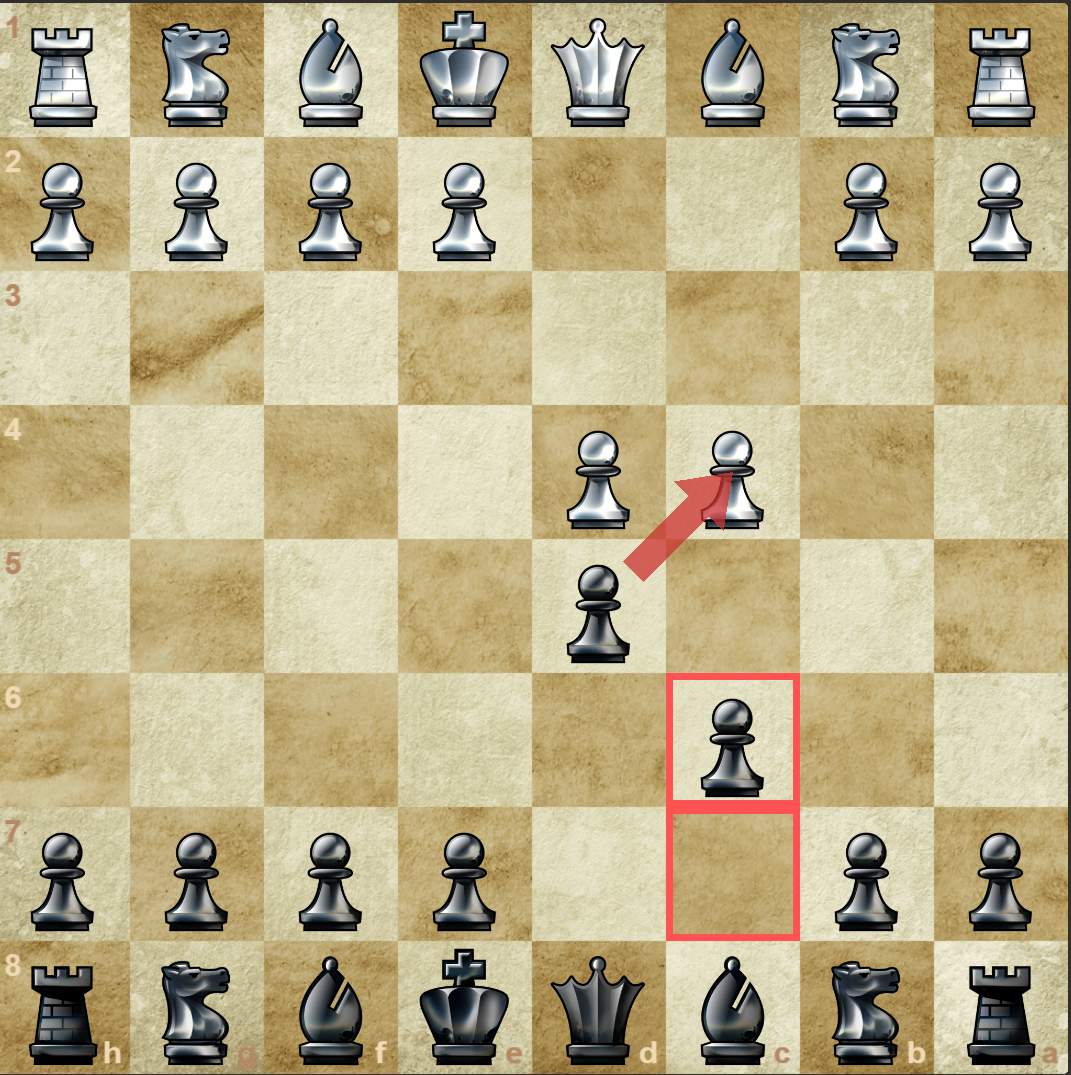Secrets of the Slav Defense


William T Green
1.d4 d5 2.c4 c6:
In the vast realm of chess openings, few can rival the intricacies and strategic potential of the Slav Defense. Stemming from its origins as a defensive maneuver, this opening has evolved over time, captivating players with its deep tactical possibilities. Join us on a fascinating journey as we delve into the origins, evolution, influential players, strategic nuances, and exciting variations of the Slav Defense.
Origins of the Slav Defense:
The roots of the Slav Defense can be traced back to the late 19th century, where it emerged as a response to the Queen's Gambit. We'll explore the historical context and the chess masters who pioneered this opening, such as Semyon Alapin and Mikhail Chigorin. Delving into the earliest recorded games, we'll uncover the original ideas behind the Slav Defense and how it gained recognition as a solid counterattacking weapon.
Evolution of the Slav Defense:
Over the years, the Slav Defense underwent several transformations, influenced by the ever-changing chess landscape. We'll examine the contributions of legendary players like Aron Nimzowitsch, who introduced hypermodern concepts to the opening, and the significant impact of the Soviet School of Chess. From early deviations to modern mainlines, we'll trace the development and refinements that shaped the Slav Defense into the versatile opening it is today.
Prominent Figures and Influential Games:
To understand the Slav Defense's popularity, we'll dive into the games and strategic innovations of key players who made significant contributions. We'll explore the notable styles and approaches of Anatoly Karpov, Vladimir Kramnik, and other world-class grandmasters, analyzing their memorable encounters where the Slav Defense played a crucial role. By dissecting their moves and ideas, we'll uncover the essence of their success and the impact on the opening's reputation.
PGN: 1. d4 d5 2. c4 c6 3. Nd2 Nf6 4. Ngf3 Bf5 5. Nh4 Bg6 6. Qb3 Qd7 7. Nxg6 hxg6 8. Nf3 dxc4 9. Qxc4 e6 10. e3 Qd5 11. Bd3 Nbd7 12. O-O Bd6 13. h3 Ne4 14. Nd2 Ndf6 15. Nxe4 Nxe4 16. Qc2 Ng5 17. e4 Nf3+ 18. Kh1 Rxh3+ 19. gxh3 Qh5 0-1
Key Takeaways & Analysis:
This game starts with the Slav Defense, a solid and reliable choice for Black.
d4 d5 2. c4 c6 3. Nd2 Nf6 4. Ngf3 Bf5 5. Nh4 Bg6 6. Qb3 Qd7 7. Nxg6 hxg6: White chooses to exchange knights on g6, doubling Black's pawns but also opening the h-file for Black's rook.
Nf3 dxc4 9. Qxc4 e6 10. e3 Qd5 11. Bd3 Nbd7 12. O-O Bd6: Both sides have developed their pieces and are preparing for the middlegame.
h3 Ne4 14. Nd2 Ndf6 15. Nxe4 Nxe4 16. Qc2 Ng5 17. e4 Nf3+ 18. Kh1 Rxh3+: Black's knight maneuver to f3 followed by the rook sacrifice on h3 is a powerful combination that exposes White's king.
gxh3 Qh5 0-1: White resigns in this position. The threat of ...Qxh3# is unavoidable, and White has no good way to prevent it.
The most impactful moves in this game were Black's 17...Nf3+ and 18...Rxh3+, which created a deadly attack on White's king. The game is a good demonstration of the power of piece activity and the dangers of neglecting king safety.
PGN: 1. d4 d5 2. c4 c6 3. g3 Nf6 4. Nf3 Bf5 5. Bg2 e6 6. O-O Nbd7 7. Qb3 Qb6 8. Nc3
Be7 9. c5 Qxb3 10. axb3 O-O 11. b4 a6 12. Bf4 Rfe8 13. h3 Ne4 14. g4 Bg6 15. Nd2 Nxd2 16. Bxd2 Bf6 17. e3 e5 18. dxe5 Nxe5 19. b3 Bc2 20. g5 Be7 21. f4 Nd3 22. Ne2 Bxb3 23. Nd4 Bc4 24. Rf3 a5 25. Nf5 Bf8 26. Rg3 axb4 27. Nh6+ gxh6 28. Gxh6+ Kh8 0-1
Key Takeaways & Analysis:
This game begins with the Slav Defense, a solid and reliable choice for Black.
d4 d5 2. c4 c6 3. g3 Nf6 4. Nf3 Bf5 5. Bg2 e6 6. O-O Nbd7 7. Qb3 Qb6 8. Nc3 Be7 9. c5 Qxb3 10. axb3 O-O: Both sides have developed their pieces and are preparing for the middlegame.
b4 a6 12. Bf4 Rfe8 13. h3 Ne4 14. g4 Bg6 15. Nd2 Nxd2 16. Bxd2 Bf6 17. e3 e5 18. dxe5 Nxe5 19. b3 Bc2: Black has managed to create some imbalances in the position and is now aiming to exploit them.
g5 Be7 21. f4 Nd3 22. Ne2 Bxb3 23. Nd4 Bc4 24. Rf3 a5 25. Nf5 Bf8 26. Rg3 axb4 27. Nh6+ gxh6 28. gxh6+ Kh8 0-1: White resigns in this position. The threat of ...Bxh6 is unavoidable, and White has no good way to prevent it.
The most impactful moves in this game were Black's 19...Bc2, creating a powerful bishop pair, and 27...gxh6, breaking open White's king position. The game is a good demonstration of the power of piece activity and the dangers of neglecting king safety.
Araiza Munoz Joes Joaquin vs Norman T Whitaker
PGN: 1. c4 c6 2. d4 d5 3. Bf4 Nf6 4. e3 e6 5. Nd2 Bd6 6. Bg5 e5 7. dxe5 Bxe5 8. Qc2 h6 9. Bh4 O-O 10. Ngf3 Re8 11. Nxe5 Rxe5 12. Qc3 d4 13. Bxf6 gxf6 14. Qd3 Bf5 15. e4 Na6 16. O-O-O Bg6 17. f4 Ra5 18. Nb3 Nb4 19. Qxd4 Nxa2+ 20. Kb1 Bxe4+ 21.Bd3 Qxd4 22. Nxd4 Bxd3+ 23. Rxd3 Nb4 24. Rh3 Rd8 25. Nb3 Rf5 26. Rf1 h5 27. Rh4 Rd3 28. g4 hxg4 29. Rxg4+ Kf8 30. Rg3 Rd7 31. Rfg1 a5 32. Rg8+ Ke7 33. Re1+ Kd6 34. Rc8 Nd3 35. Re3 Nxf4 36. Re4 Nd3 37. Kc2 Nb4+ 38. Kd2 Re5 39. Ke3 a4 40. Nd4 Kc5 41. Nf3 Rxe4+ 42. Kxe4 Kxc4 43. h4 Rd1 44. h5 Kb3 45. Rg8 Rh1 46. Rh8 Kxb2 0-1
Key Takeaways & Analysis:
This game begins with the Slav Defense, with both sides opting for a solid and strategic setup.
c4 c6 2. d4 d5 3. Bf4 Nf6 4. e3 e6 5. Nd2 Bd6 6. Bg5 e5 7. dxe5 Bxe5 8. Qc2 h6 9. Bh4 O-O 10. Ngf3 Re8 11. Nxe5 Rxe5 12. Qc3 d4 13. Bxf6 gxf6: Black has managed to exchange a pair of knights and open up the g-file.
Qd3 Bf5 15. e4 Na6 16. O-O-O Bg6 17. f4 Ra5 18. Nb3 Nb4 19. Qxd4 Nxa2+ 20. Kb1 Bxe4+ 21. Bd3 Qxd4 22. Nxd4 Bxd3+ 23. Rxd3 Nb4 24. Rh3 Rd8 25. Nb3 Rf5 26. Rf1 h5 27. Rh4 Rd7 28. g4 hxg4 29. Rxg4+ Kf8 30. Rg3 Rd3: Black has managed to create some imbalances in the position and is now aiming to exploit them.
Rf1 h5 32. Rh8+ Ke7 33. Re1+ Kd6 34. Rc8 Nd3 35. Re3 a5 36. Re4 a4 37. Nd4 Kc5 38. Nf3 Rxe4+ 39. Kxe4 Kxc4 40. h4 Kb3 41. Rg8 Rh1 42. h5 Kxb2 0-1: White resigns in this position. The threat of ...Rh5 is unavoidable, and White has no good way to prevent it.
The most impactful moves in this game were Black's 13...gxf6, opening up the g-file, and 19...Nxa2+, creating a powerful knight outpost. The game is a good demonstration of the power of piece activity and the dangers of neglecting king safety.
Thrilling Encounters and Masterful Maneuvers:
Beyond theoretical analysis, the Slav Defense offers a captivating stage for exciting battles and masterful maneuvers. We'll present enthralling game examples from historic clashes to modern encounters, showcasing the artistry and brilliance of players who have wielded the Slav Defense as their weapon of choice. By exploring these memorable games move by move, you'll witness the tactical and strategic fireworks that make the Slav Defense an enchanting opening.
Conclusion:
In conclusion, the Slav Defense stands as a testament to the enduring nature of chess openings. From its humble origins to its prominence in modern chess, it has proven to be a force to be reckoned with. Whether you're an avid chess player seeking to expand your repertoire or simply fascinated by the intricacies of the game, the Slav Defense offers a rich tapestry of history, strategy, and excitement to explore. Embrace the challenge, study the masters, and let the Slav Defense become your gateway to success on the chessboard.